Tamil Nadu cuisine offers an extraordinary tradition that is a captivating blend of taste, colour, culture, and spices.
This cuisine from the south of India is recognised for its intricate flavours, liberal use of locally grown spices, and an array of vegetarian and non-vegetarian dishes.

Image Credit: Dakshin, Crowne Plaza Chennai Adyar Park
Rooted deeply in the local culture and agrarian history of the region, Tamil Nadu cuisine involves an array of rice-based specialities, fermented foods, coconut-infused recipes, and seafood, underpinned by the fragrant presence of curry leaves, tamarind, and mustard seeds.
Characterized by a balanced fusion of flavours, the cuisine of Tamil Nadu tantalizes the palate and offers a profound insight into the state’s rich cultural heritage.
What is unique in the cuisine of Tamil Nadu
Tamil Nadu cuisine stands unique in its approach to a balance of flavours and health-oriented cooking techniques. It’s not just about tantalizing the taste buds, but it’s also about maintaining a delicate equilibrium between the six fundamental tastes – sweet, sour, salty, bitter, pungent, and astringent.

Tamil Nadu‘s cuisine is also noted for its wonderfully imaginative usage of a variety of rice preparations, given the abundant rice cultivation in the region, with dishes like dosa, idli, and pongal becoming global favourites.
The ‘Meals’ or ‘Saapadu’, an elaborate lunch platter, is a true representation of Tamil Nadu cuisine’s diversity and balance, showcasing multiple vegetable dishes, lentils, pickles, and desserts along with staple rice.
Another distinct feature is the liberal use of tamarind, providing a tangy flavour in sambar and rasam. Tamil Nadu‘s coastal location also influences its cuisine, bringing an array of seafood dishes, flavoured with locally sourced spices and coconut.
Moreover, the traditional ‘Chettinad’ cuisine, a sub-cuisine of Tamil Nadu, is famous for its fiery and aromatic dishes, distinguished by the generous use of pepper and other spices, providing a unique gastronomical experience.
Importantly, Tamil Nadu cuisine is centred mostly on two ingredients: rice flour and coconut. These components are used in the majority of the state’s breakfast meals. Aside from that, because the state is located on the coast, seafood is quite popular in the state.
Here are a few of the numerous delicious dishes of Tamil Nadu to try out.
Uttapam
Although similar to dosa, uttapam is more akin to a pancake with toppings. Uthappa or ooththappam is another name for it. The dish’s batter is made using urad dal and rice. The dish’s exterior shell is crunchy, yet the inside is as soft as an idly. It only takes 5 minutes to make the meal after the batter is prepared. The uttapam is then topped with tomatoes, onions, capsicum, and other vegetables. It’s great with either coconut chutney or sambar.
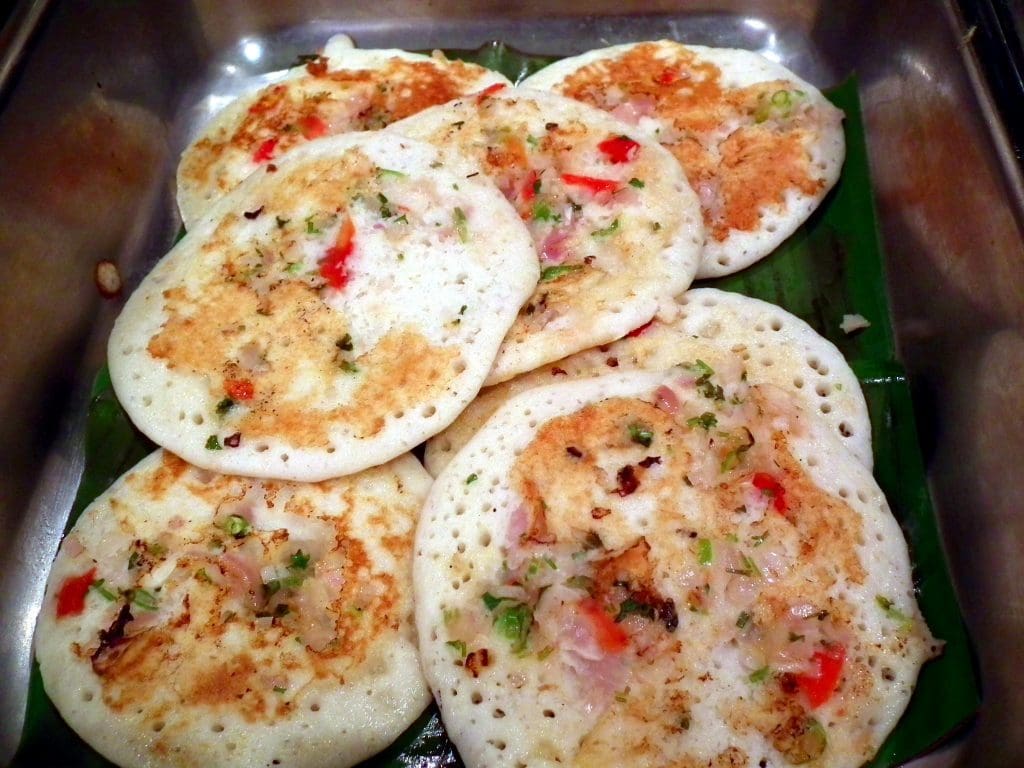
Unlike a traditional dosa, which is thin and crispy, Uttapam is thicker, with a soft, fluffy texture, often likened to a pizza due to its toppings. It’s characterized by various toppings like finely chopped onions, tomatoes, capsicum, carrots, coconut, and cilantro. The blend of fermented batter and the crunch of fresh vegetables make Uttapam a delightful combination of textures and flavours. Not only is it rich in taste, but it’s also a nutritious dish, usually served with coconut chutney and sambar. Uttapam, with its simple ingredients and easy preparation, represents the comfort and richness of South Indian cuisine.
Tamarind rice
Tamarind rice, also known as ‘Pulihora’ or ‘Puliyodharai’ in Southern India, is a tangy-spicy dish typically made from cooked rice, tamarind extract, and a unique spice mix. The process involves cooking the rice and then flavouring it with a paste made from tamarind, jaggery, and an array of spices such as turmeric, asafoetida, fenugreek, and mustard seeds.
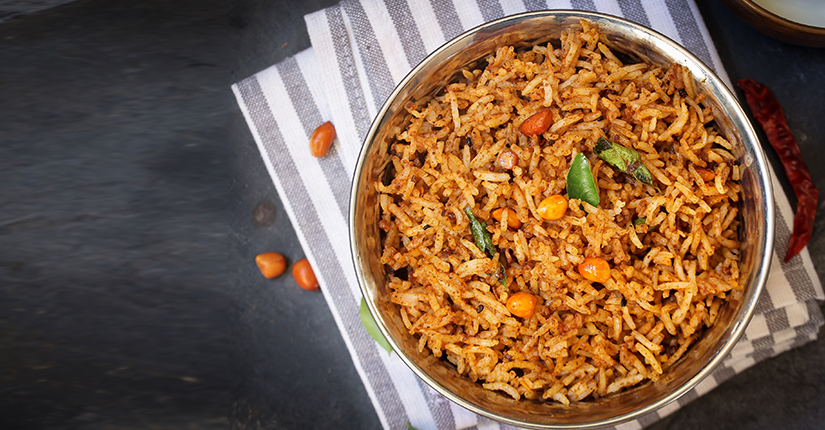
The dish is further embellished with crunchy peanuts, curry leaves, and dried red chillies, which are fried in sesame oil to release their aromatic flavours. Tamarind rice is not only popular for its delightful combination of tangy, sweet, and spicy flavours, but also for its long shelf life, making it a favourite choice for travel or picnics. This vibrant dish is a staple during festivals and special occasions in South India, exemplifying the region’s culinary traditions.
It’s one of the most basic and straightforward South Indian rice recipes. It is provided in temples to worshippers after being offered as prasadam or nivedyam. It’s also made for special occasions and festival seasons and served as part of a celebratory feast.
Murukku
Murukku is a popular South Indian snack made from a mix of rice flour, urad dal flour, salt, and water, flavoured with ingredients like sesame seeds, cumin seeds, asafoetida, and sometimes, a hint of chilli powder or pepper for spice.

The dough is then shaped into spiral or coil forms using a ‘murukku press’ before being deep-fried until they attain a golden-brown hue. The end result is a crunchy, savoury treat that is characterized by its knotted appearance and light, brittle texture.
Although similar to chakli, the components used in chakli are different from those used in South Indian murukku. Murukku is comparable to chakli in terms of preparation. Rice flour and various lentil flours are used to make it. Murukku is also produced in a variety of delightful ways in South Indian households.
In South India, murukku is a traditional offering during festivals like Diwali and is often served as a snack with tea. Its crunchy texture and subtly spiced flavour have made it a beloved snack not just in India, but in various other parts of the world as well.
Cabbage kootu
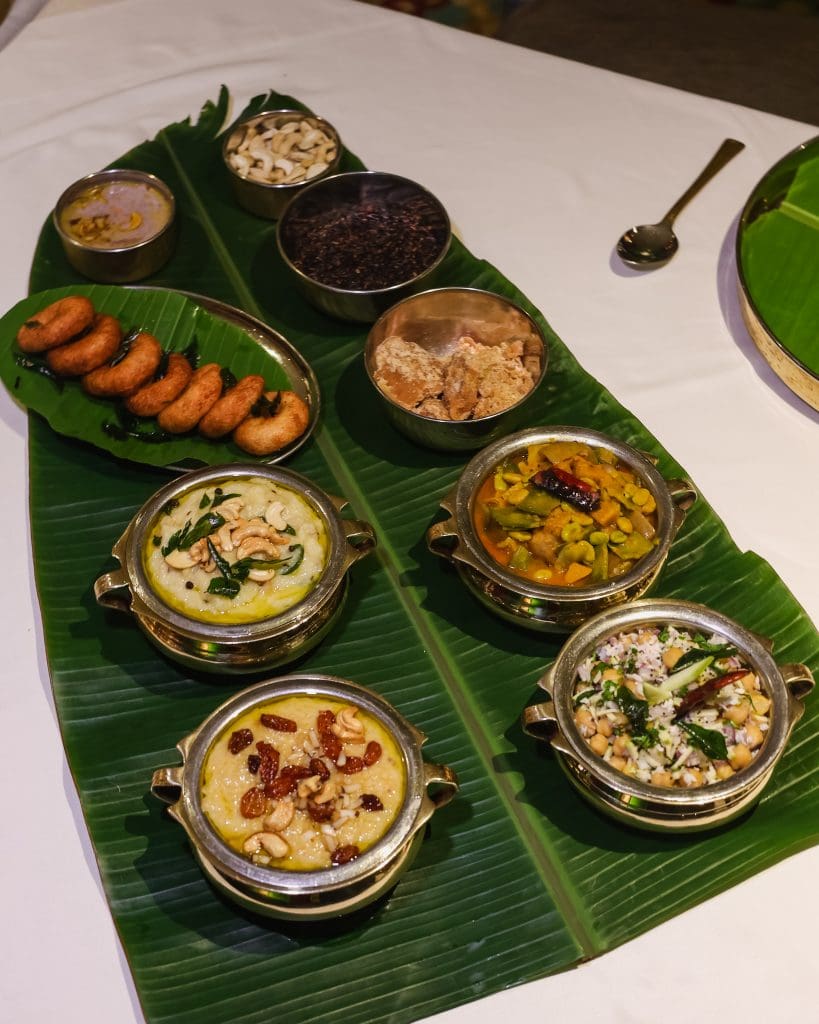
Image Credit: Dakshin, Crowne Plaza Chennai Adyar Park
Cabbage Kootu is a wholesome and nutritious dish from South Indian cuisine that combines cabbage with lentils, typically moong dal or pigeon peas. The key components of this dish include finely chopped cabbage, cooked lentils, and a ground paste of coconut, cumin seeds, and green chillies.
The dish is tempered with mustard seeds, curry leaves, and asafoetida in ghee or oil, enhancing the flavours significantly. Cabbage Kootu is known for its comforting blend of mild spice and subtle sweetness from the cabbage. This dish is often served with hot rice or roti and is part of the daily meal routine in many South Indian households. It’s also a perfect example of the simplicity and health-focused approach of South Indian cuisine.
While this delectable South Indian dish is generally made with cabbage and moong lentils, as well as coconut and spices, there are a variety of different preparations. Cabbage kootu can have a little thick consistency. Moong dal is commonly used to make cabbage kootu, but you may also use tuvar dal or a half-half of both tuvar dal and moong dal. Cabbage kootu is often served with steaming rice and a vegetable stir fry, roast, or pickle, as well as papadums.
Lemon rice
Lemon Rice, also called chitranna or nimmakaya pulihora, is a crunchy, aromatic, and tangy dish that is simple to prepare and delicious. The dish primarily comprises steamed rice, flavoured with lemon juice and tempered with mustard seeds, dried red chillies, curry leaves, and turmeric powder.
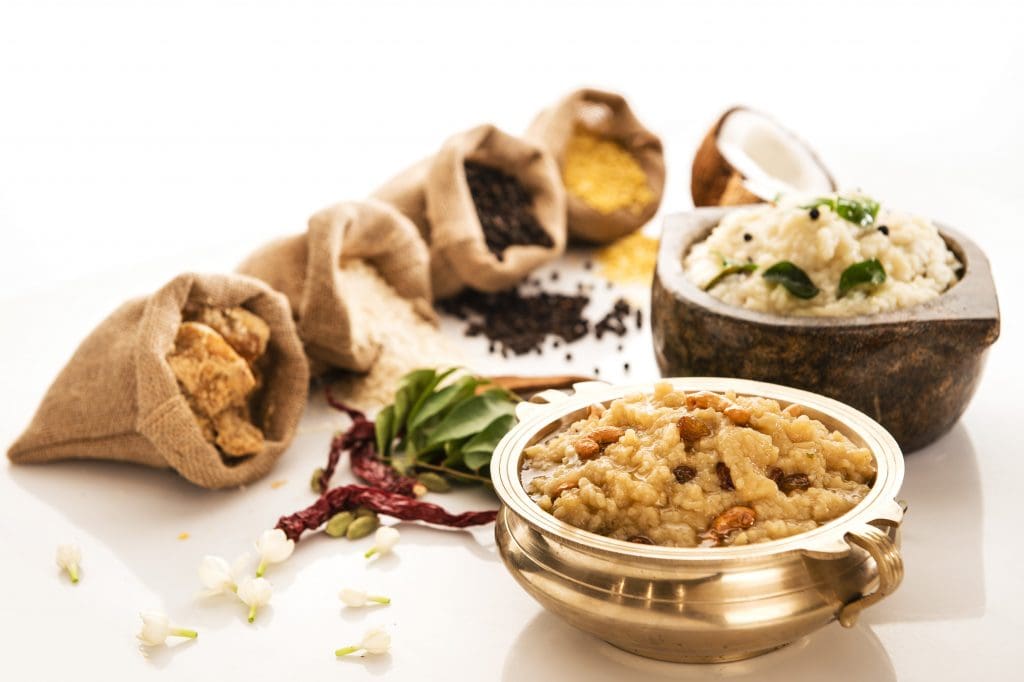
The spicy, acidic, and nutty flavour of this steamed rice is enhanced by the addition of lemon juice, fried nuts, aromatic herbs, and spices. The crunch of roasted peanuts and urad dal adds a textural dimension to the dish, making it a perfect standalone meal or a refreshing accompaniment to other South Indian delicacies. You can serve lemon rice with pappadums or with a side vegetable salad or even coconut chutney.
This concoction results in a beautifully yellow-hued dish that not only tantalizes the palate with its tangy-spicy taste but also proves to be a visual delight. Being a light, easy-to-make and incredibly flavourful dish, Lemon Rice often finds a place in everyday meals, lunchboxes, and even festive spreads across Southern India.
Rasam
Rasam is a traditional South Indian soup, revered not only for its delicious taste but also for its digestive benefits. The dish typically incorporates a tamarind juice base and a blend of spices such as cumin, coriander, and black pepper. The flavoursome broth is then further tempered with mustard seeds, asafoetida, and curry leaves, infusing it with a distinctive aroma.

Rasam is a basic and necessary dish in a South Indian meal. It is also called saaru in Kannada and chaaru in Telugu. In Tamil and Telugu, the word Rasam means “liquid.” It can refer to any type of juice. Traditionally served as a second course with rice, Rasam can also be enjoyed as a starter or as a standalone spicy soup. With its warm and tangy profile, Rasam is the ultimate comfort food for many and is a staple part of meals in South Indian homes.
Poriyal
Beans Poriyal is a South Indian classic made with delicate French beans, aromatic spices, and fresh coconut. It is essentially a stir-fried vegetable dish seasoned with a medley of spices. The dry steamed meal has a lot of green beans cooked till soft with herbs and spices such as mustard seeds, curry leaves, and red chillies, then topped with freshly grated coconut.
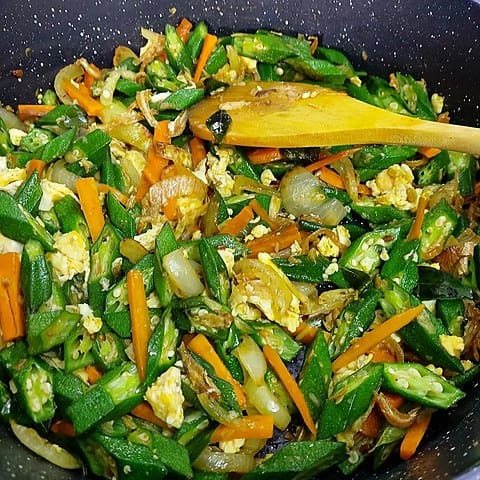
The vegetables, which could range from beans and cabbage to okra and beetroot, are sautéed with mustard seeds, urad dal, dried red chillies, and curry leaves. A unique feature of Poriyal is the addition of grated coconut towards the end of cooking, which adds a hint of sweetness and a rich texture to the dish.
Served as a side dish, Poriyal complements both rice and flatbreads wonderfully, and its versatility ensures it has a place in everyday meals, as well as on festive occasions. Its simple preparation, combined with its delicious and nutritious profile, makes Poriyal a beloved dish in South Indian cuisine. You can serve it with roti or paratha.
Pongal
Khara Pongal, also known as Ven Pongal, is a hearty dish, made with rice and moong dal, which can be served sweet or savoury. The savoury variation, known as ven pongal or khara pongal, is made with ghee, curry leaves, black pepper, ginger, cumin, and hing. It is predominantly consumed during breakfast or lunch.
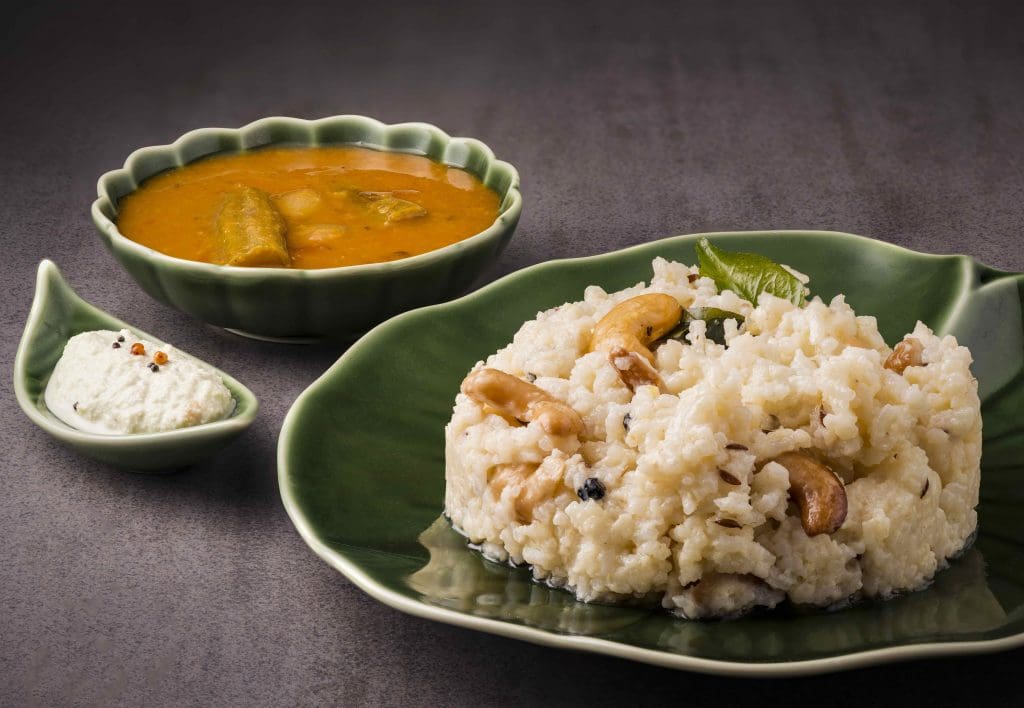
The savoury notes of this concoction are beautifully contrasted by the decadent aroma and richness of the ghee, making it a favourite amongst all age groups. Khara Pongal is commonly served with coconut chutney, sambar, or gojju (a type of tangy gravy), and is particularly associated with the harvest festival of Pongal in Tamil Nadu, signifying prosperity and abundance.
During regular puja, auspicious days and festivals, this very savoury and delectable dish is presented to the deities as naivedyam not just in South Indian homes but also in temples.
Kuzhi Paniyaram
Kuzhi Paniyaram is a well-loved South Indian dish, particularly popular in Tamil cuisine. Ball-shaped dumplings made with fermented urad dal and rice batter are known as kuzhi paniyaram. It’s crafted from a fermented batter of rice and black lentils, similar to the one used for making idlis and dosas. A mixture of finely chopped onions, green chillies, and other spices is then added to the batter, which is subsequently poured into a unique paniyaram pan, consisting of several small, hemispherical indentations. The batter cooks into delightful, round dumplings that are crispy on the outside while maintaining a soft and fluffy interior.
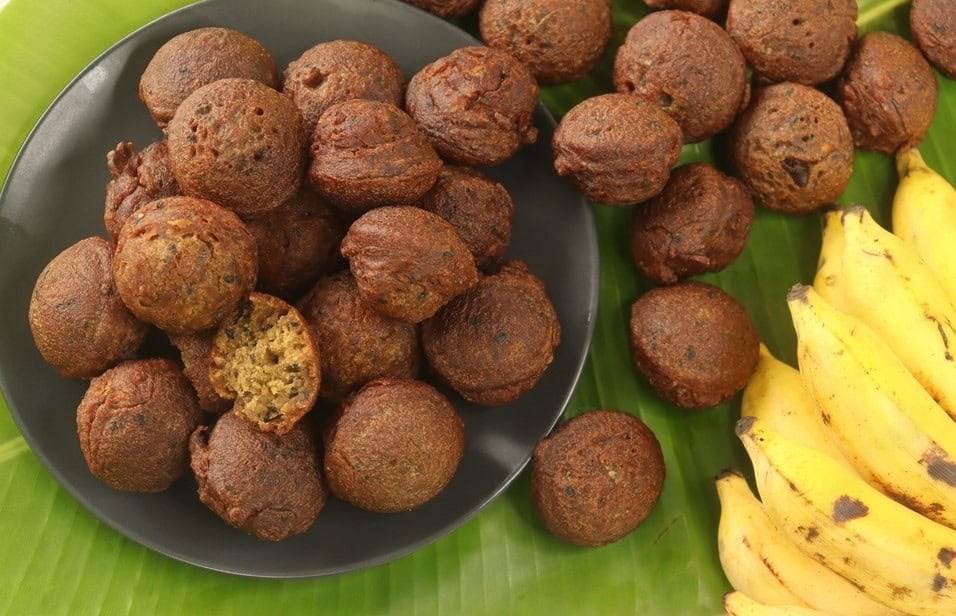
Paniyaram is often made with leftover or over-fermented Idli or dosa batter in many households. Masala paniyaram is typically served with a chutney such as coconut or tomato chutney. These are typical morning dishes from South Indian cuisine. One can, however, enjoy them with tiffin sambar or idli sambar and Idli podi.
Rice Payasam
Rice payasam is a sweet dessert made with rice, milk, ghee, and nuts that has been passed down through generations. It’s a South Indian variation of the popular Rice Kheer from North India. This creamy and rich dish is slowly cooked until the rice is completely softened and the milk is thickened, resulting in a lusciously smooth consistency. Aromatic ingredients like cardamom, saffron, dried fruits and nuts are often added to enhance the flavour and provide a crunch against the creamy backdrop.
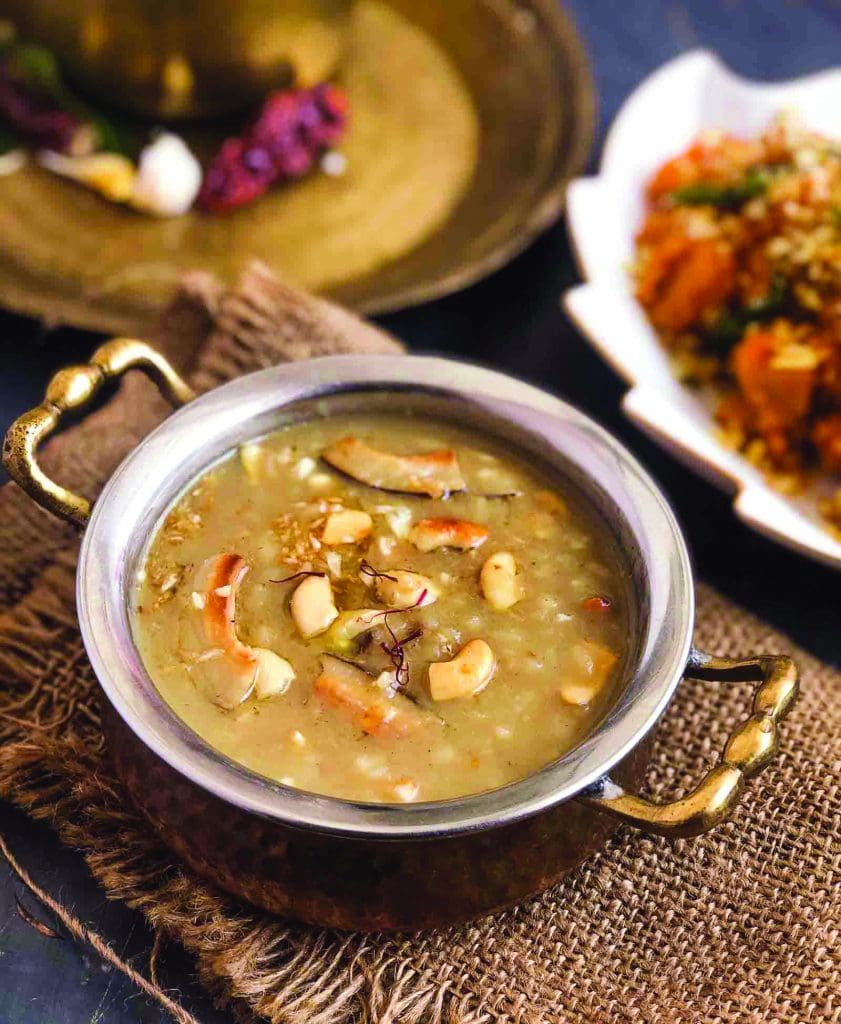
Rice payasam is prepared in most South Indian houses for festivals, festivities, and religious ceremonies. During the puja, it is offered as Naivedyam to the Hindu gods or deities. The humble ingredients in Rice Payasam come together to create a universally loved dessert that is the perfect end note to any meal.
Read more: Latest



